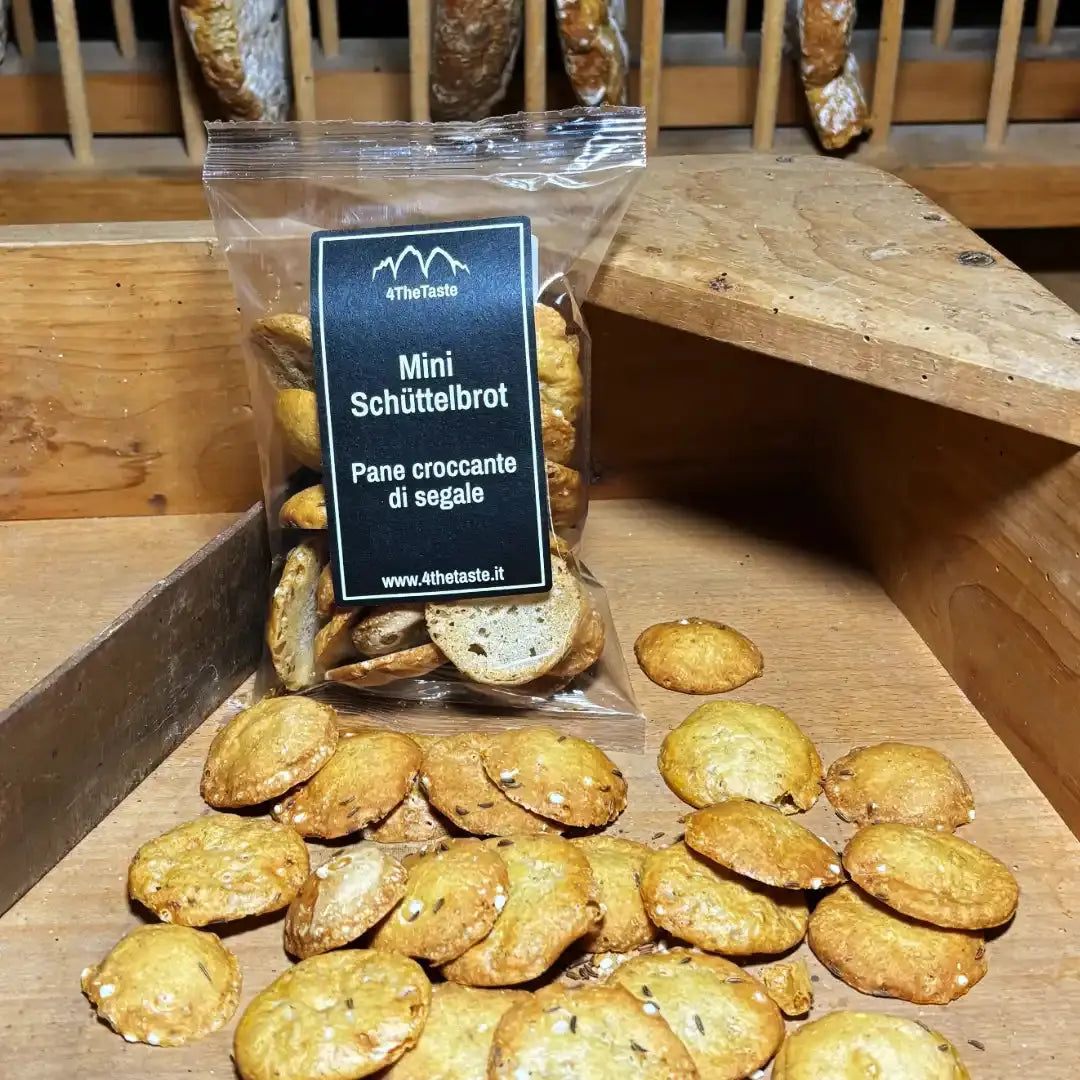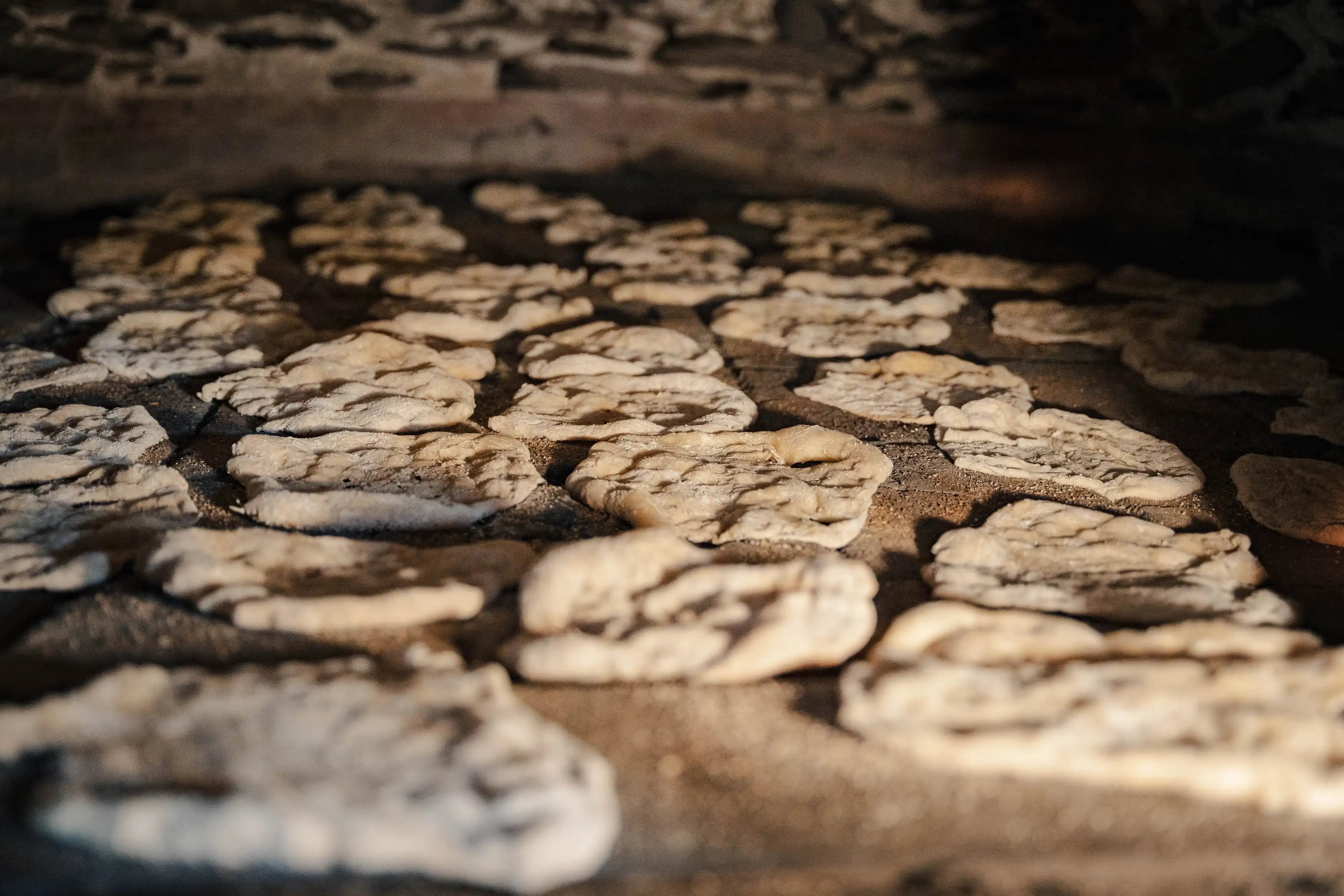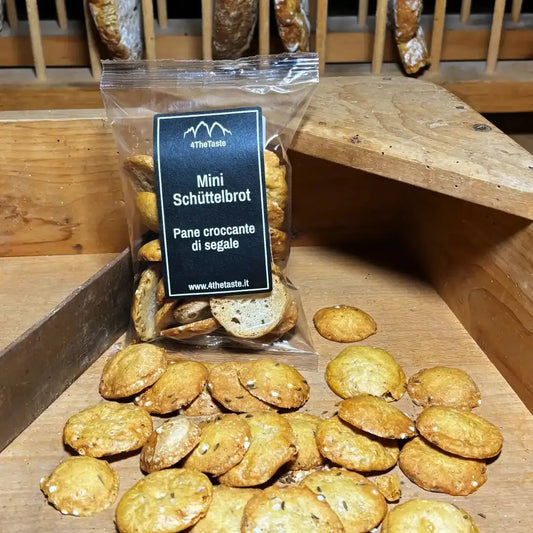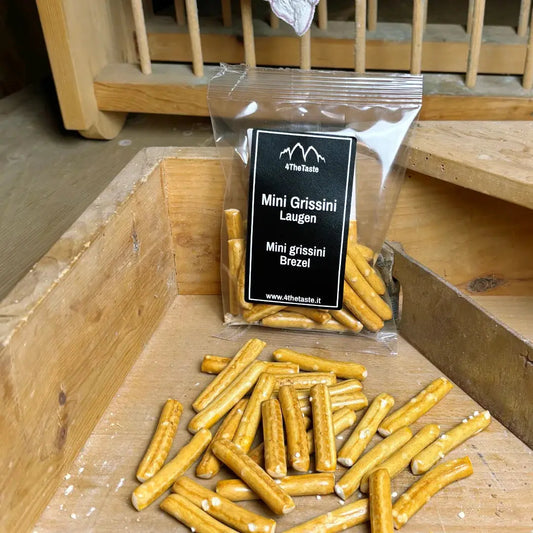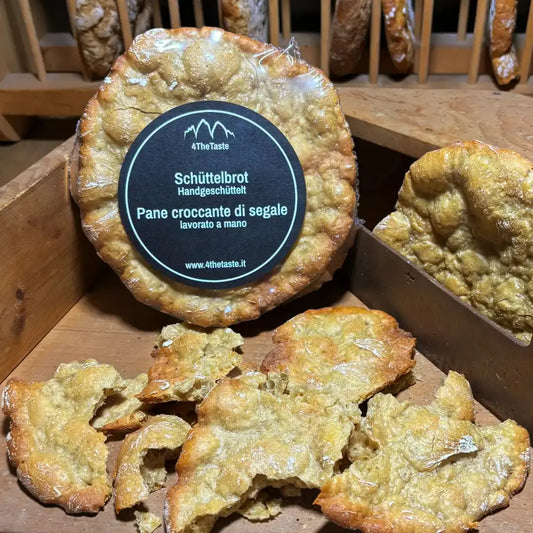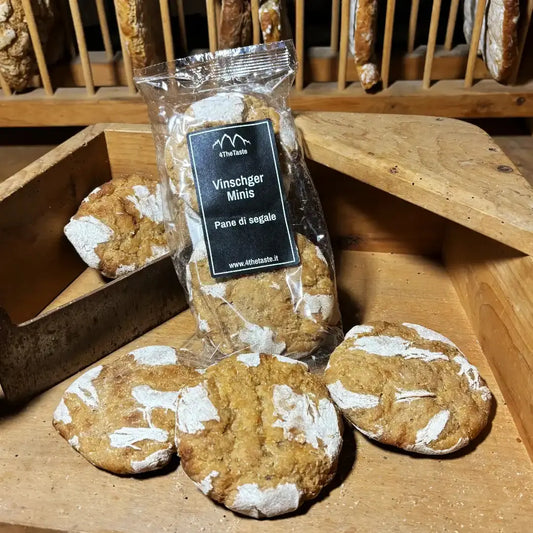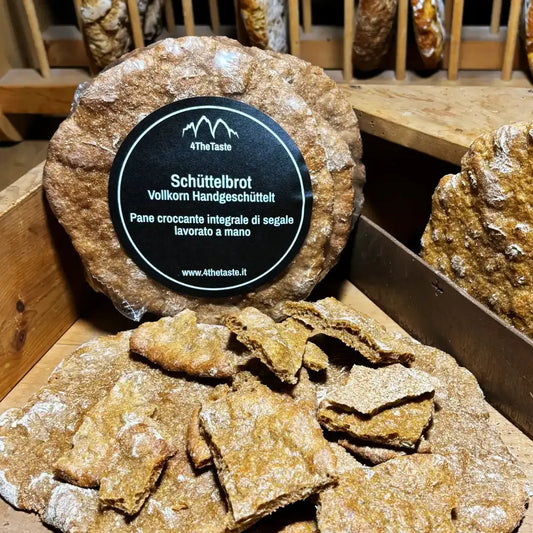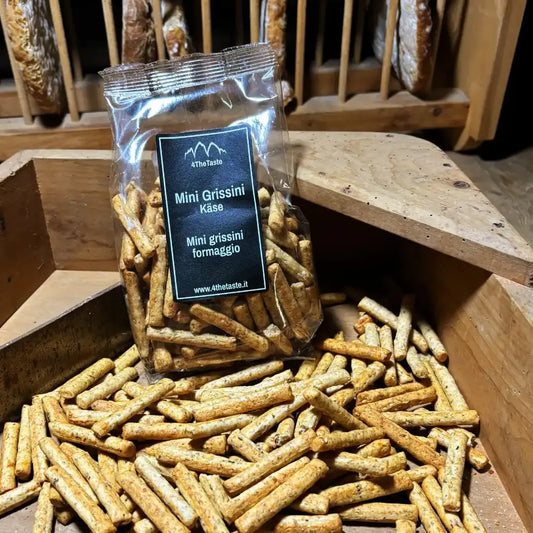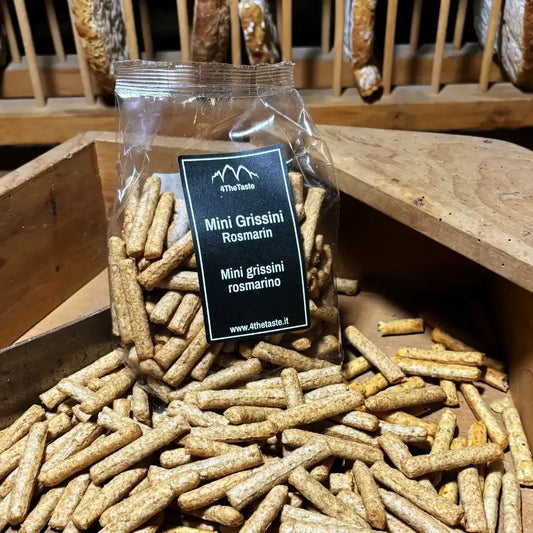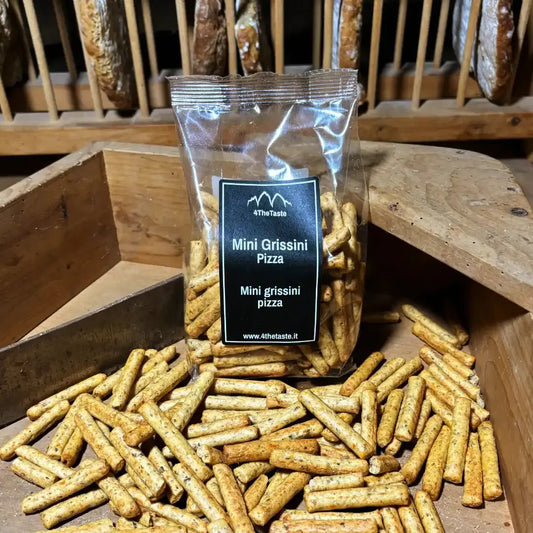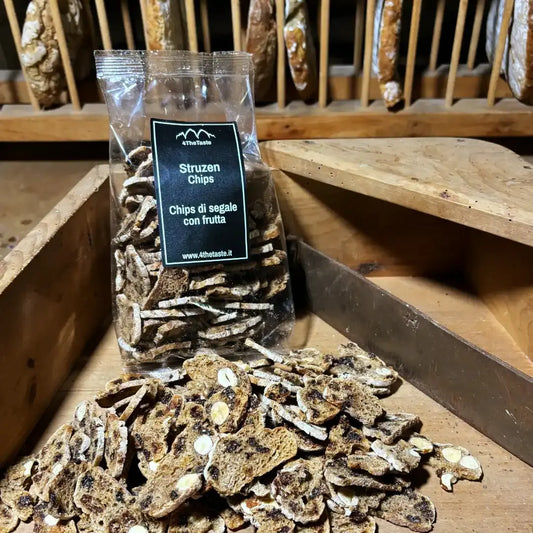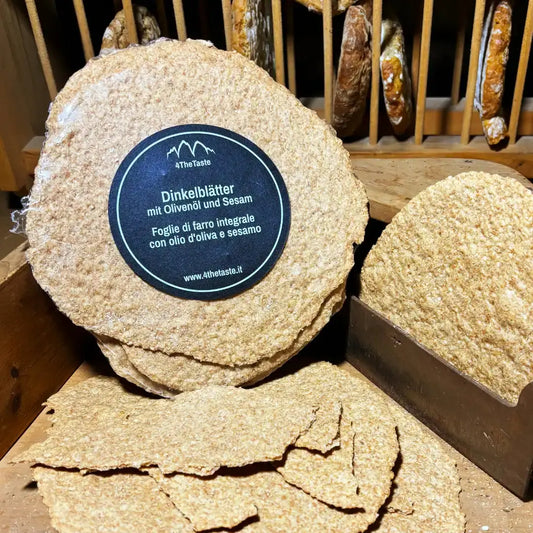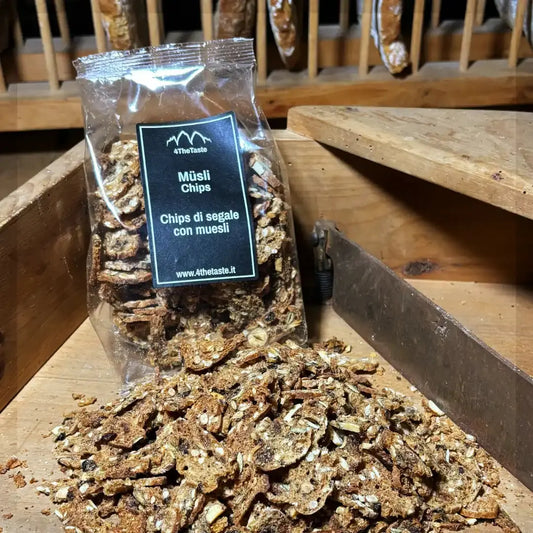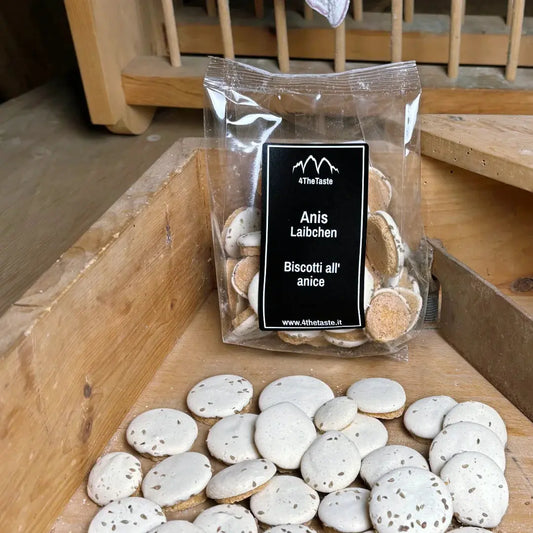Starting from 99€ order value
Schüttelbrot: Südtirols knuspriges Kulturgut
Schüttelbrot , a traditional flatbread from South Tyrol, is more than just a food - it is a piece of living cultural history . In this article we delve into the world of this unique bread, from its historical roots to modern variations.
What is special about Schüttelbrot?
Schüttelbrot is characterized by several unique properties:
- Production method : The name "Schüttelbrot" comes from the special way it is prepared. The dough is shaken vigorously before baking to give it its characteristic flat shape.
- Long shelf life : Originally developed as a storage bread, Schüttelbrot can be stored for months without spoiling.
- Regional diversity : Depending on its place of origin in South Tyrol, the taste, texture and appearance of the Schüttelbrot vary.
- Protected geographical indication : Since 2020, "Südtiroler Schüttelbrot" has carried the EU seal for protected geographical indications (PGI), which underlines its regional importance.
- Unique spice : The use of traditional spices such as trefoil (Trigonella coerulea), anise, fennel and coriander gives Schüttelbrot its distinctive aroma.
The history of Schüttelbrot
The origin of Schüttelbrot is closely linked to the way of life in the South Tyrolean Alps:
- Medieval roots : The development of Schüttelbrot goes back to the early Middle Ages.
- Stockpiling : In remote mountain regions it was necessary to preserve food for a long time.
- First documented mention : A Tyrolean baker's ordinance from 1610 first mentions the "kreizzerröggl", an early form of Schüttelbrot.
Alpine farming : Schüttelbrot was particularly popular with broadcasters in alpine huts, where fresh food was rare.
How is Schüttelbrot made?
The production of Schüttelbrot follows a traditional process:
- Ingredients : rye flour, water, yeast, salt and a special spice mixture.
- Dough preparation : The dough is kneaded and allowed to rest.
- Shaking : The dough is shaken vigorously to loosen it and give it the typical flat shape.
- Baking : The bread is baked at high temperature until it is crispy and dry.
How do you eat Schüttelbrot properly?
Schüttelbrot has many uses:
- Traditional : For the "Marende" (South Tyrolean snack) with bacon and cheese.
- As a snack : Pure as a crispy accompaniment to wine or beer.
- In soups : Crumbled as an ingredient in soups or stews.
- With spreads : Topped with butter, herb curd or other spreads.
Is Schüttelbrot healthy?
Schüttelbrot can certainly be part of a balanced diet:
- Rich in fiber : Due to the high rye content, it provides a lot of fiber.
- Low fat : The bread itself is low in fat.
- Long-lasting satiety : The complex carbohydrates ensure a long-lasting feeling of satiety.
- Be careful with additives : The health value may vary depending on the topping or use.
Is Schüttelbrot like crispbread?
Although both types of bread are flat and crispy, there are key differences:
- Production : Schüttelbrot is shaken and crispbread is rolled out.
- Ingredients : Schüttelbrot typically contains more spices.
- Texture : Schüttelbrot is often more brittle and irregular in shape.
- Cultural background : Schüttelbrot is deeply rooted in South Tyrolean culture, while crispbread is of Scandinavian origin.
Why is Schüttelbrot so hard?
There are several reasons why Schüttelbrot is so hard:
- Drying process : The long baking time at a low temperature removes a lot of moisture from the bread.
- Thin shape : The flat shape promotes rapid curing.
- Durability : The hardness contributes significantly to the long durability.
- Tradition : Originally the bread was supposed to be edible even after months of storage.
How do I make Schüttelbrot soft?
Although Schüttelbrot is traditionally eaten hard, there are ways to make it softer:
- Briefly moisten : Spray with water and let rest for a few minutes.
- Steaming : Steam briefly over a pan of boiling water.
- Soak in soup : Soak briefly in warm broth or soup.
Does Schüttelbrot have carbohydrates?
Yes, Schüttelbrot contains carbohydrates:
- Main ingredient : Rye flour is rich in complex carbohydrates.
- Glycemic index : Due to the high rye content, it has a lower glycemic index than white bread.
- Dietary fiber : Part of the carbohydrates consists of indigestible dietary fiber.
What does Schüttelbrot taste like?
The taste of Schüttelbrot is characteristic and complex:
- Base note : Strong and spicy due to the rye content.
- Spices : Depending on the recipe, notes of caraway, fennel, anise or coriander may emerge.
- Texture : The crunchy consistency contributes significantly to the taste experience.
- Regional variations : The taste can vary depending on the place of origin in South Tyrol.
Conclusion
Schüttelbrot is much more than just a food - it is a piece of South Tyrolean cultural history that is worth biting into. Its unique production method, unmistakable taste and long shelf life make it a special culinary experience. Whether as a traditional accompaniment to a Marende, as a crispy snack or as an ingredient in modern dishes - Schüttelbrot enriches gastronomy far beyond the borders of South Tyrol. Its recognition as a protected geographical indication underlines the importance of this bread as part of the culinary heritage of an entire region.
